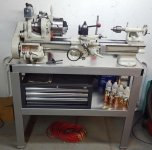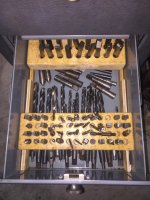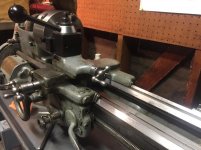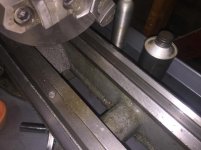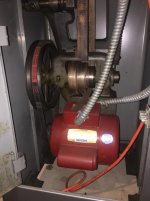motormayhem
Plastic
- Joined
- Nov 19, 2013
- Location
- Arizona
Hi Guys,
I am looking at purchasing a South Bend 9in Model A from a friend at work. This is a CL344ZD lathe. I have used a number of Hardinge and DoAll lathes making various parts, but this would be my first South Bend and first time owning the lathe. I wanted to get your opinion on the quality of these lathes as well as what common issues or "good to have" features would be before pulling the trigger. Also is it possible to convert this lathe to a lever style collet lathe in the future or am I stuck with a chuck setup?
Some of the items it would come with:
3 Jaw Chuck
4 Jaw Chuck
2nd Backing Plate
Quick Change Toolpost
Drills / Cutters
Carbide Cutter Set
Boring Bar Set
Knurling Set
Wired for 120V
I am looking at purchasing a South Bend 9in Model A from a friend at work. This is a CL344ZD lathe. I have used a number of Hardinge and DoAll lathes making various parts, but this would be my first South Bend and first time owning the lathe. I wanted to get your opinion on the quality of these lathes as well as what common issues or "good to have" features would be before pulling the trigger. Also is it possible to convert this lathe to a lever style collet lathe in the future or am I stuck with a chuck setup?
Some of the items it would come with:
3 Jaw Chuck
4 Jaw Chuck
2nd Backing Plate
Quick Change Toolpost
Drills / Cutters
Carbide Cutter Set
Boring Bar Set
Knurling Set
Wired for 120V



 and can thus use the full 3/4" bar cap or up to 1-3/8" in the collet body. Other than that, the tiny stroke (2") of the TS barrel is a joke, especially when often only 1-3/4" is usable with some tapers in it.
and can thus use the full 3/4" bar cap or up to 1-3/8" in the collet body. Other than that, the tiny stroke (2") of the TS barrel is a joke, especially when often only 1-3/4" is usable with some tapers in it.